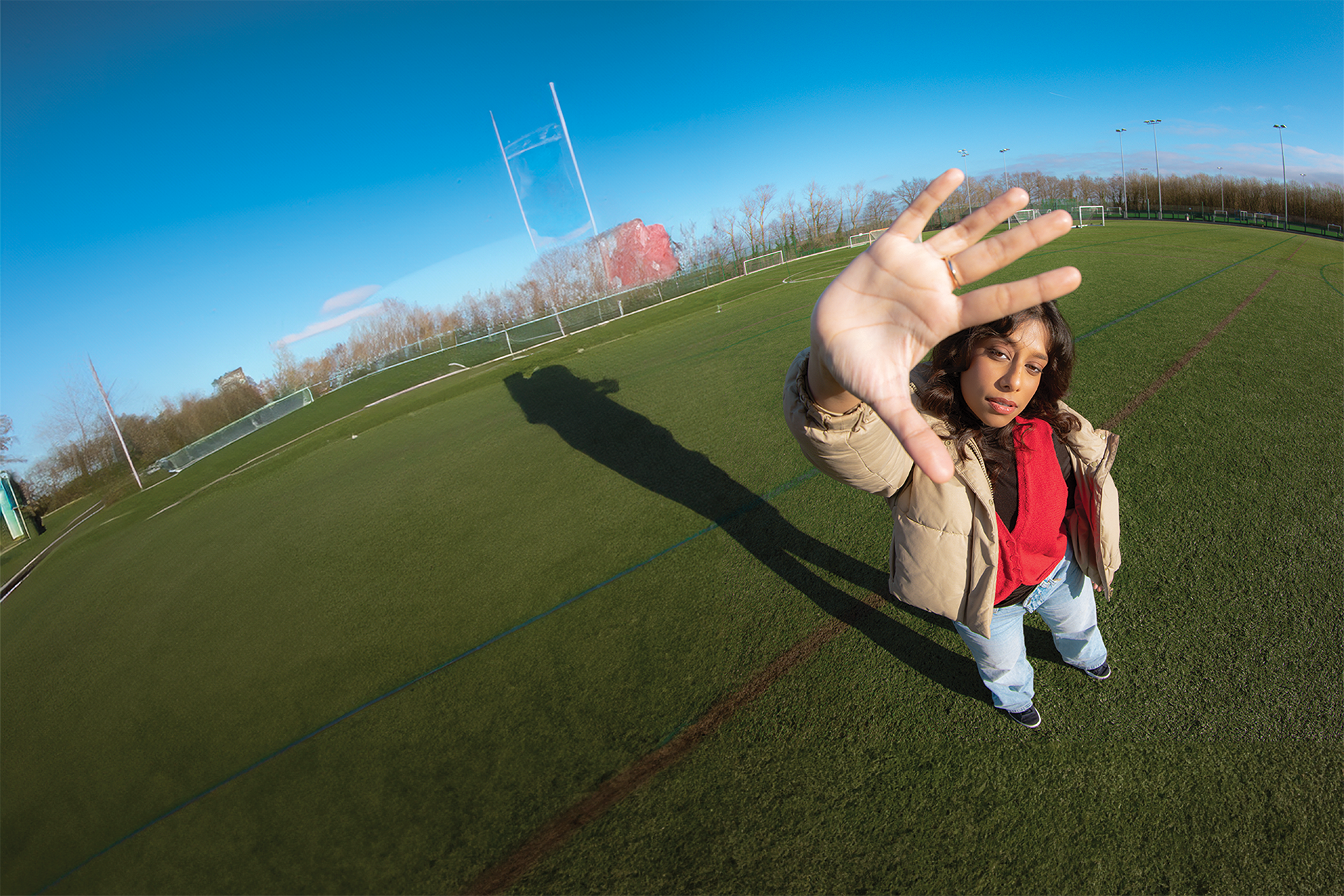Graphic Design
Learn to convey powerful ideas with graphic design through practical projects, industry partnerships and creative collaboration.
Key information
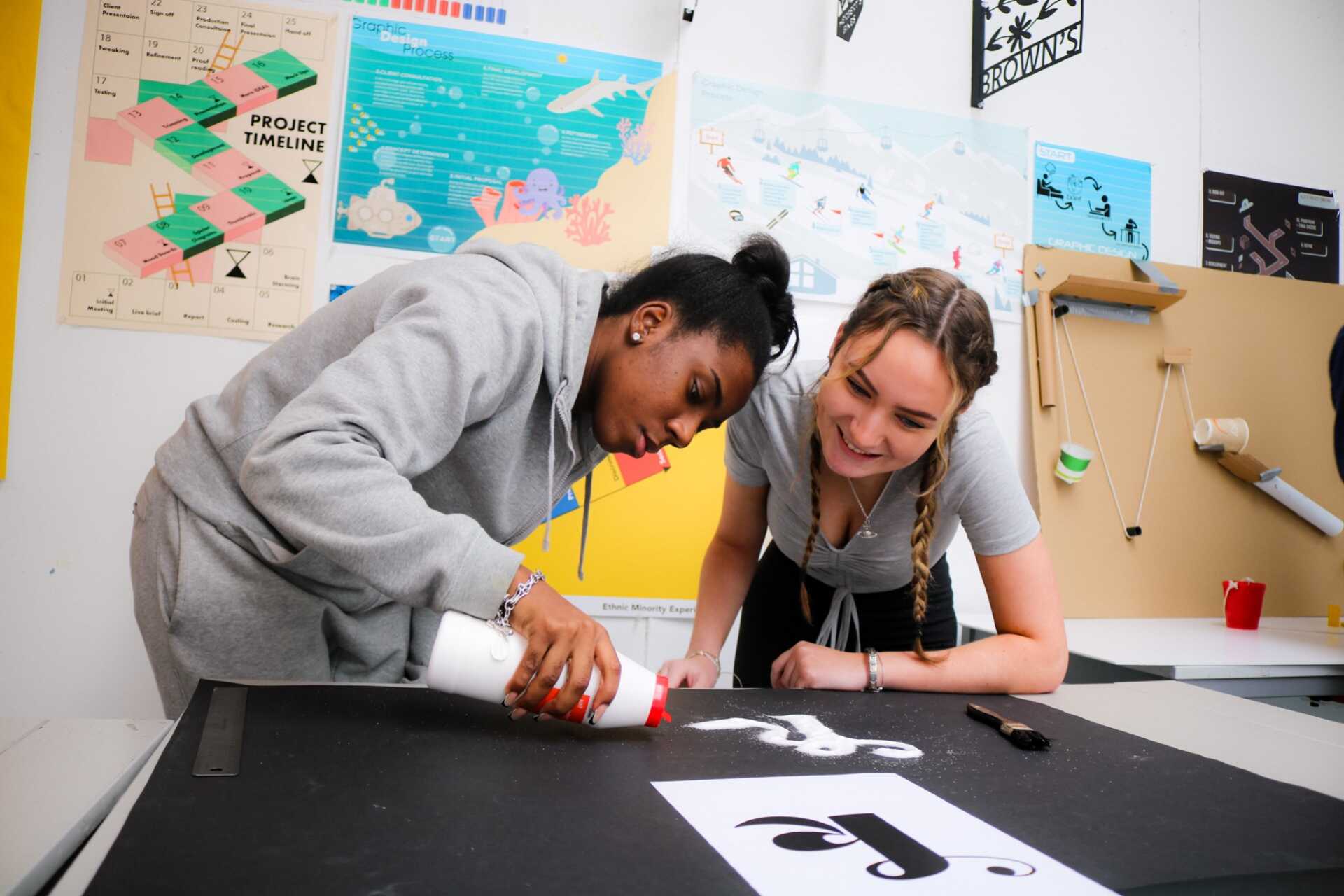
Learn to convey powerful ideas with graphic design through practical projects, industry partnerships and creative collaboration.

Design can shape the way we understand the world - from branding that builds identities to campaigns that drive social change.
At Kent, you’ll explore how visual communication can inform, inspire, and provoke, developing your personal voice and identity along the way.
Not only will you develop core graphic design skills such as typography, image-making, editorial design, UX/UI, and motion. But you’ll also have the freedom to explore emerging trends and techniques.
You will consider graphic design in the context of major contemporary issues such as the climate crisis, digital misinformation, inclusive design, mental health awareness, ethical branding, and more.
Live projects, industry partnerships, and mentoring give you hands-on opportunities to refine your skills and build a portfolio that represents your personal style and innovative thinking while being informed by industry.
You'll use our range of specialist facilities to create your own work, respond to live briefs and industry-set challenges, deliver client pitches, and receive professional mentoring giving you the skills, experience and confidence for a career in design.
The following modules are what students typically study, but this may change year to year in response to new developments and innovations.
Compulsory modules currently include the following
As designers, how do we communicate visually across the digital realm, physically across the printed page and on a larger scale spatially and environmentally? What are the fundamental design techniques, processes, skills, and principles that enable us to work with clients?
You’ll be introduced to a range of design fundamentals to develop your visual literacy, enabling you to confidently communicate your design concepts across a range of outputs. You’ll explore how to interpret client briefs and be able to suggest a range of creative solutions.
Through a range of creative exercises and briefs, you’ll start to embed the core skills of graphic design which are the foundation for the entire programme. You’ll continue to develop and deploy these skills and processes throughout your design career.
How have historical and contemporary practices and practitioners contributed to the discipline of graphic design? And where does graphic design sit within cultural, political, and commercial contexts?
You’ll learn critical and core theories of the discipline, analysing design artefacts through the lenses of process, identity, form, affect and environment. In doing so you’ll study a range of global design movements and outcomes from Mass Production to Postmodernism, from typographic design to political propaganda. You’ll engage in essay writing and develop skills in research, academic referencing, and articulating arguments through writing and graphic design.
Each week you’ll explore and discuss a different design movement, gaining insights into global graphic design projects from the exceptional to the ordinary and assess their impact. This will enable you to draw on historical design ideas to inform and inspire your future graphic design solutions.
How can play be used as a tool in the design process and what form might it take? How can the arrangement of elements, colours and typography carry a narrative, conveying both meaning and emotion?
Through a series of workshops and briefs you’ll learn how play can be used as a methodology in the design process to ideate, explore and create original and thought-provoking outcomes. You’ll also learn how design, narrative and storytelling are used to communicate a concept or an idea to a wider audience.
At the end of this module, you’ll be able embed a playful approach within your design work and be able to explain the use narrative as a core element of the design process and your final outcomes. You will also be able to critique the work of your peers and respond to feedback from others.
Can imagery alone communicate ideas to an audience? If so, how? By creating original artwork, graphic designers have the power to synthesise and illustrate content. What techniques and processes might you use to do so?
You’ll learn a range of creative image-making techniques and processes such as photomontage, collage, print making, photography, and mark-making. Through experimentation and application, you’ll develop your ability to art direct and create images based on conceptual requirements – a key feature of being a successful graphic designer.
From a series of workshops and defined outcomes, you’ll add a range of image-making techniques to your skill set. You’ll also experiment with and learn technical skills in relevant industry software to enhance and manipulate imagery ready for production. This will give you the capacity to shape your ideas and concepts into design solutions.
How can type be used to carry meaning, language and emotion? In what ways can type and letterforms break convention and be used to challenge function and form?
You’ll learn the attributes and language of typography, appreciating the principles of type and how it enables an idea to be written and given visual form. You’ll examine the breaking of conventions and be encouraged to undertake type/letterform experiments, such as hand lettering, calligraphy, using type as image, type for headline, and body copy typographic detailing.
Through a series of workshops and creative briefs, you’ll experiment and challenge the function and form of type while also exploring the concept of type as image. You’ll be given the opportunity to pursue two- and three-dimensional outcomes, both digital and physical.
How can we use moving images to bring characters and stories to life using motion and sound? Animation is frequently used to intrigue and engage an audience with its capacity to connect linear events and moments. What are the limitations of both physical and digital moving imagery, and how might you overcome them?
You’ll learn the core principles of animation and trial these across multiple platforms including stop-motion, flip book, kinetic typography, claymation and motion graphics. You’ll explore visual storytelling through original image generation, sound and motion, with a focus on application in analogue and digital environments.
You’ll emerge confident in using industry-standard animation software and be able to appreciate the fluidity of moving image in graphic design. You’ll know when and how to enhance campaigns, brands and other graphic design outcomes for increased attention and impact.
Compulsory modules currently include the following
Brands are everywhere. Increasingly we see brand identities morph into brand experiences that appeal to all the senses, but who does it best, and how can you do it better? As consumers engage with brands online, where should designers start when crafting intuitive and engaging audience experiences?
This module delves into the theory and application of brand identity and brand experience within graphic design, emphasising both analogue and digital techniques. Through case studies and a place-brand experience project, you'll develop your own perspectives and create alternative brand identity experiences aligned with ethical values. You’ll explore the principles of interaction design and deepen your understanding of design for digital interfaces.
Following research, including user and audience profiling, you'll align your responses to the specific needs and objectives of a brief to generate and present industry-standard outcomes for your personal portfolio book.
How can graphic design and architecture intersect to enhance spatial navigation? How does interdisciplinary teamwork elevate the creation of user-centric wayfinding solutions?
In this module, you’ll explore spatial navigation through interdisciplinary collaboration with students on the Spatial and Interior Design and Architecture courses. You’ll study the principles of environmental graphic design, and focus on creating cohesive wayfinding systems that seamlessly integrate with architectural spaces. You’ll engage in research, analysis, and hands-on design through collaborative projects which emphasise user-centred approaches to enhance the navigational experience.
You’ll develop skills in signage design, information mapping, and environmental graphics by combining graphic communication and architectural strategies. And because of the collaborative learning environment, you’ll gain a comprehensive understanding of how design can effectively guide and inform individuals within built environments and work with practitioners from other disciplines.
Design is powerful. It influences user interactions, emotions, and perceptions across various platforms from digital interfaces to physical spaces. How can you adapt your existing skill set to connect with all the senses on a large scale, building environments to evoke emotions and tell stories?
Experiential graphic design is a multidisciplinary approach to building an environment which contributes to how people perceive and interact with a space. In this module, you’ll learn where design and human experience intersect, broadening your knowledge of design principles beyond small screens and A4 paper. You’ll engage in projects and case studies which will challenge you to conceptualise and execute super-sized designs that work in spatial environments.
By the end of the module, you’ll understand how experiential graphic design gives purpose to built environments and creates meaningful interactions with the people who pass through and inhabit them.
You have unique design skills, but how do you prefer to work and what personal and teamwork strengths would you bring to a start-up design agency?
You'll identify your strengths and talents, form a start-up creative agency with classmates, and pitch work to clients. Together you’ll then formulate solid briefs and identify measurable outcomes. Through practical application, you’ll develop an appreciation of the commercial and financial concerns of the creative business sector, and show your work to a public audience.
By the end of this module, you’ll have an insight into working for a design studio, what it means to be ‘employable’, understand the changing creative job market, and be well-placed to make appropriate career decisions. More importantly, you will have started to develop your professional network.
Data visualisation transforms data and information into graphical representations. What tools do designers use to ensure the resulting visualisations are simultaneously accurate and compelling?
You’ll explore the theory and practice of transforming sometimes complex datasets into compelling visual narratives. You’ll also learn to interpret and communicate data effectively, exploring various visualisation techniques and tools. The teaching emphasises understanding the principles of information design, including hierarchy, clarity and accessibility, as well as data ethics and the importance of accuracy in creative solutions.
By the end of this module, you’ll be able to analyse datasets and generate stories around them, honing your ability to distil insights and engage audiences through visually impactful designs. You’ll be proficient in creating data-driven design solutions that inform and engage. You’ll also emerge with a heightened understanding of the role of graphic design in shaping perceptions and facilitating understanding in an increasingly data-driven world.
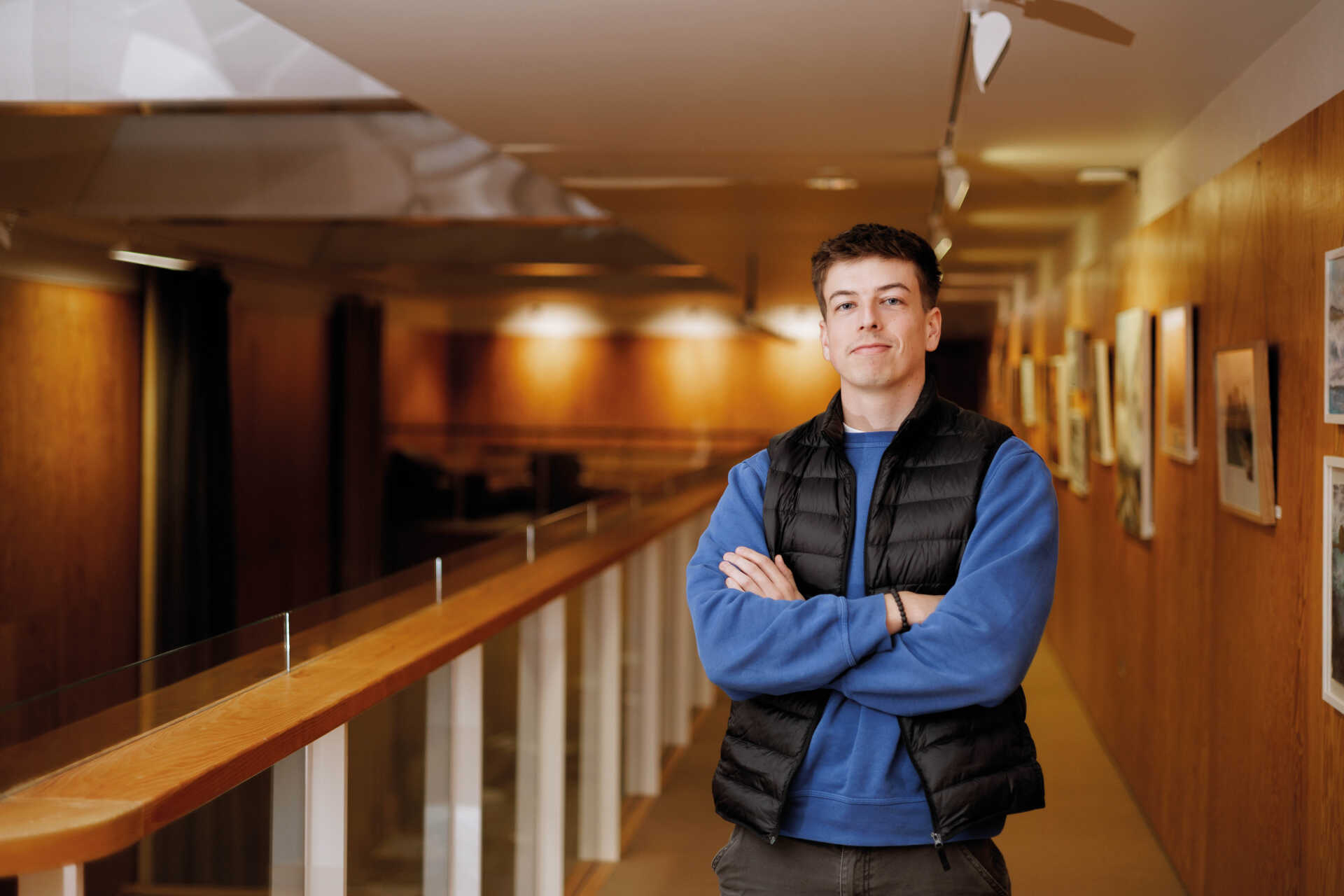
You have the option to add a year in industry to this course. We already know you have the confidence and commitment to thrive in the workplace and kick-start your career. This is your chance to prove it, to yourself and to employers.
When should I start looking? Companies will recruit at different times of the year based on their size. It's good to be application ready by the summer of your first year.
Where can I get help finding a placement? Book an appointment with a placement adviser via the careers service.
Will I get paid? Most of our placements are paid.
Do I have to pay tuition fees? Yes, you’ll pay a substantially reduced fee. Fees for the current year (subject to changes) can be found on our tuition fees website.
Where can I get visa advice if I’m an international student? Kent Students' Union can help with any visa queries.
Does the University keep in touch? You receive four-weekly check-in emails, a visit from the team every three months and you can reach out to us any time by email or phone.
Do I work for a full year? The minimum requirement for an industrial placement is 44 weeks.
What could you do in a year?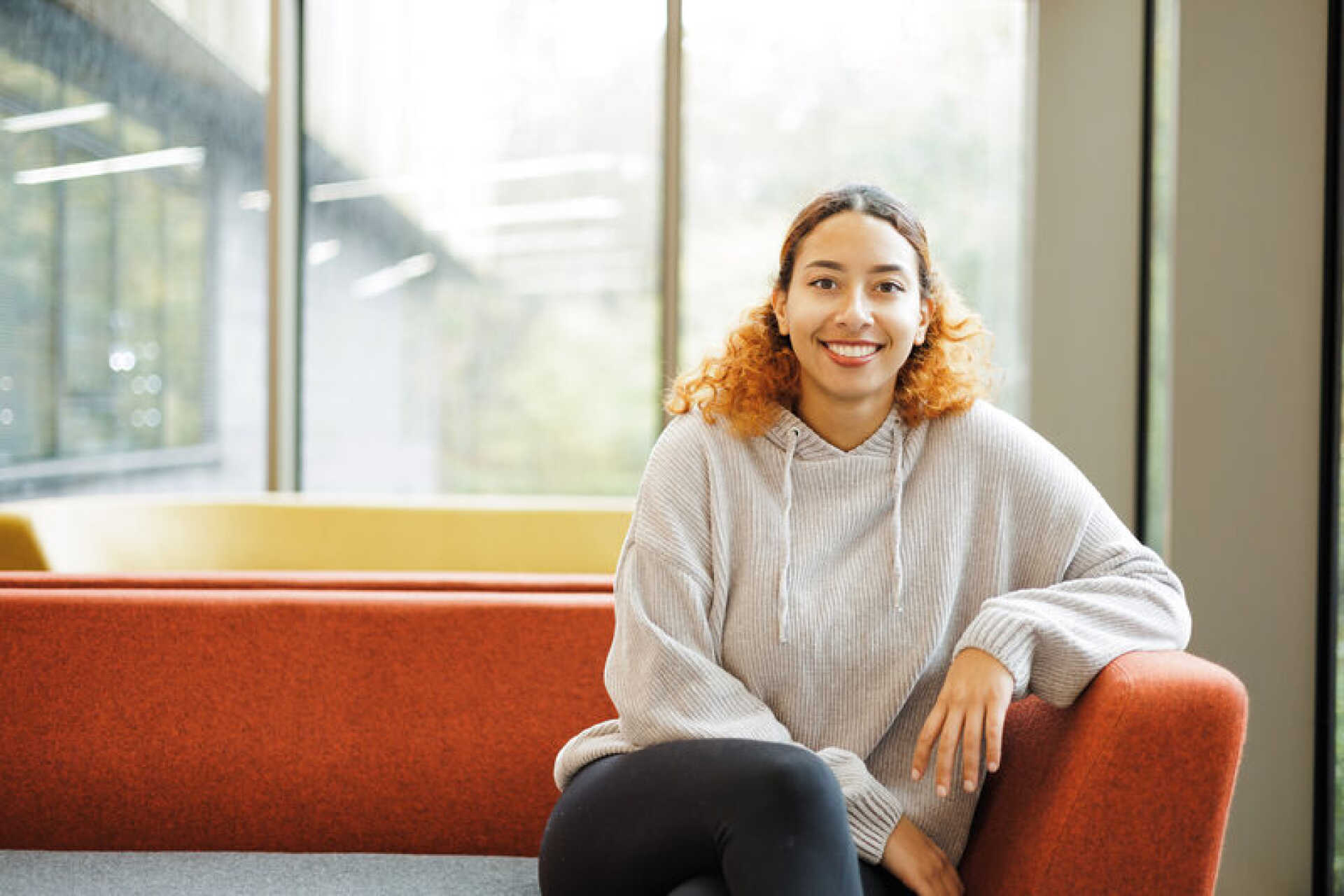
Taking a year abroad – whether you study at one of our prestigious partner universities or do an internship – is an amazing opportunity.
Is there any additional funding for the year abroad? You may be able to apply for funding; check with our Go abroad team.
Do I have to pay tuition fees for the year abroad? Yes, you’ll pay a substantially reduced fee. Fees for the current year (subject to changes) can be found on our tuition fees website. You don’t pay anything to the host uni.
Will I still get my maintenance loan? Yes.
When does the year abroad take place? Between your second and final year.
Do I have to learn a foreign language? You’re taught in English in many destinations, but you’ll get more out of your year if you learn the local language.
Does the University keep in touch? You have full access to all Kent’s support services as well as our dedicated Go abroad team.
Where could you go in a year?Compulsory modules currently include the following
Are you nearly ready to fly? Now is the time to expand your network and connect with the organisations you want to work with after graduating later this year.
This module is the culmination of your undergraduate degree, building on everything you have learned to date, and deploying strategies to make yourself and your career aspirations visible to the wider design community. You’ll develop a self-promotion strategy and research professional career options available to you. To aid this process, you’ll visit design studios, hear talks from professional designers and share your portfolio with prospective employers.
By the end of the module, you'll have developed a Personal Career Development Plan and should feel confident and well-prepared to launch your career, whether that be employment in entry-level graduate jobs, setting up a freelance business or embarking on further study.
How does design impact individuals, society and the planet? Is it possible to make the world more honest and peaceful, happier, healthier and fairer through design? Good design is not enough, and neither is ethical design. But when blended they ensure that design can be for the good of humankind and the planet.
This module enables you to consolidate the research methods you have been using to date into a framework that supports ethical design. You’ll propose a research methodology to develop the overall image and presence of an existing brand to consumers. You’ll do this through critical analysis of an existing design according to a set of design-specific ethical principles.
After you finish this module, you’ll be able to propose an ethical research strategy and compile a critical assessment and report for a brand’s main stakeholders.
How do graphic designers work quickly to develop concepts and ideas for a range of briefs? What is it like to work thoroughly, but at pace? The Design Council describes the design process in the form of a double diamond and this module deals with the first of those diamonds: ‘discover and define’.
By working on the initial stages of a series of external, competition and self-initiated briefs, you’ll learn strategies to undertake the discovery and definition stages of the Design Council’s double diamond. You’ll also develop your personal workflow and time management skills.
You’ll learn to choose from a range of research methods to expand your creative ideas and ensure the underpinning research for any given project is solid. Using cross-disciplinary research, you’ll explore critical contexts and generate preliminary design directions resulting in professional standard early-stage client pitches.
Which pieces in your design portfolio best showcase your design strengths and indicate your potential to a prospective employer? How can you demonstrate your creative design and production skills to ensure you stand out from everyone else?
The focus of this module is on the resolution, implementation and production of at least two major practical projects, which you’ll design against a critical context that you specify. You’ll learn how to use the Design Council’s second diamond of the double diamond model to generate a range of concepts, edit, justify, and select the strongest, and generate original pieces.
By undertaking two significant design projects, being responsible for setting your own deadlines and taking responsibility for self-defined briefs, this module will help you transition from a learner to a fully independent designer ready to work in the creative industries.
Here’s a sample timetable from your first term at Kent. You'll learn through a mix of lectures, seminars and workshops - in both big and small groups with focused teaching blocks and time to work, rest or explore uni life.
Items in green are confirmed, whereas anything marked yellow could be scheduled at a different time or day depending on your group, but this gives a good sense of what to expect.
Tuition fees in England for 2026 have not yet been set. As a guide, the 2025 annual fee for Home students is £9,535.
Tuition fees may be increased in the second and subsequent years of your course. Detailed information on possible future increases in tuition fees is contained in the Tuition Fees Increase Policy.
Fees for undergraduate students are £1,905.
Fees for undergraduate students are £1,430.
The University will assess your fee status as part of the application process. If you are uncertain about your fee status you may wish to seek advice from UKCISA before applying.
For details of when and how to pay fees and charges, please see our Student Finance Guide.
These are the necessary costs you are likely to incur on the course. This is guidance and the overall figure may be less or more, but we would not expect any spend beyond this to be necessary to undertake the course.
IT Equipment
Students will require regular access to a desktop computer/laptop with an internet connection to use the University of Kent’s online resources and systems. Please see information about the minimum computer requirements for study.
Students will need to provide the materials necessary to produce hand-crafted, hand-illustrated and printed images, books, documents and reports. Students will need to provide the material necessary to produce physical models, either by hand or using available 3D printing and/ or laser cutting machines. Site visits are essential, and students will need to cover transport costs (local distances only), which will vary, depending on module site location. Some modules may entail visiting public archives and libraries, requiring regional or national travel and entrance fees. Annual fieldtrips will be offered during the programme, and students are strongly encouraged to join these and will need to cover the costs of travel, accommodation and subsistance.
Year Abroad
There will be additional costs associated with the Year Abroad such as travel, accommodation, health and food costs. Please see Kent’s Go Abroad webpages on Costs and Funding for more information.
Year in Industry
There may be additional costs associated with the Year in Industry such as travel or accommodation, which will need to be covered by the student. Please see Careers and Employability webpages for more information.
Find out more about accommodation and living costs, plus general additional costs that you may pay when studying at Kent.
Kent offers generous financial support schemes to assist eligible undergraduate students during their studies. See our funding page for more details.
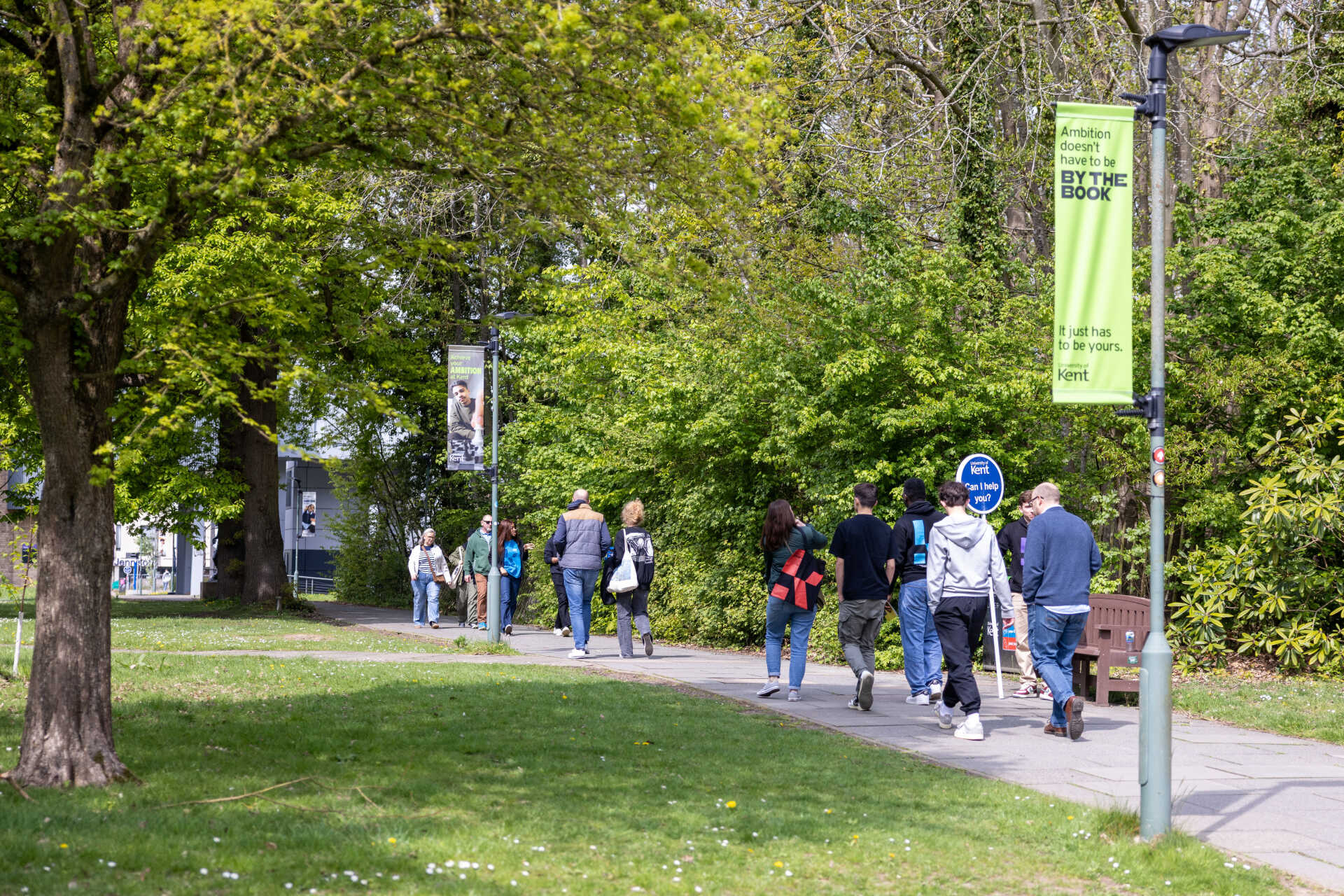
With employability embedded throughout, you’ll graduate with the skills, experience and confidence for a career in design.
Our course is designed with industry to ensure graduates leave with the skills needed for a career in graphic design. Employers give guest lectures, workshops, facility visits, internships and feedback on student work and assessments. This means you have the opportunity to develop your network and explore career pathways throughout the course.
Our graduates typically work in roles such as:
Graduates entering high-skill roles can earn up to
A degree can boost average lifetime earnings by over
If you are from the UK or Ireland, you must apply for this course through UCAS. If you are not from the UK or Ireland, you can apply through UCAS or directly on our website if you have never used UCAS and you do not intend to use UCAS in the future.
You can make a direct application to Kent if you pay international tuition fees, live outside the UK or Ireland and do not have or intend to have a UCAS account or application.
There is no application fee for a direct application to Kent.

